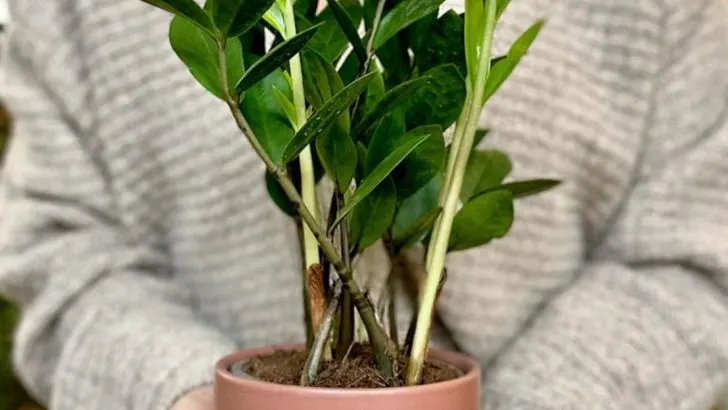Whether you’re heading out of town or just forget to water sometimes, not all container plants can handle a dry spell. Some are remarkably drought-tolerant and bounce back beautifully after days without attention — while others wilt within 24 hours if their soil dries out.
In this article, we’ll spotlight 11 tough container plants that can go up to two weeks without water and still look lush. We’ll also warn you about 9 thirsty varieties that need daily hydration to survive, so you can plan accordingly.
Choose the right plants for your routine — and never come home to a crispy container garden again.
Aloe Vera
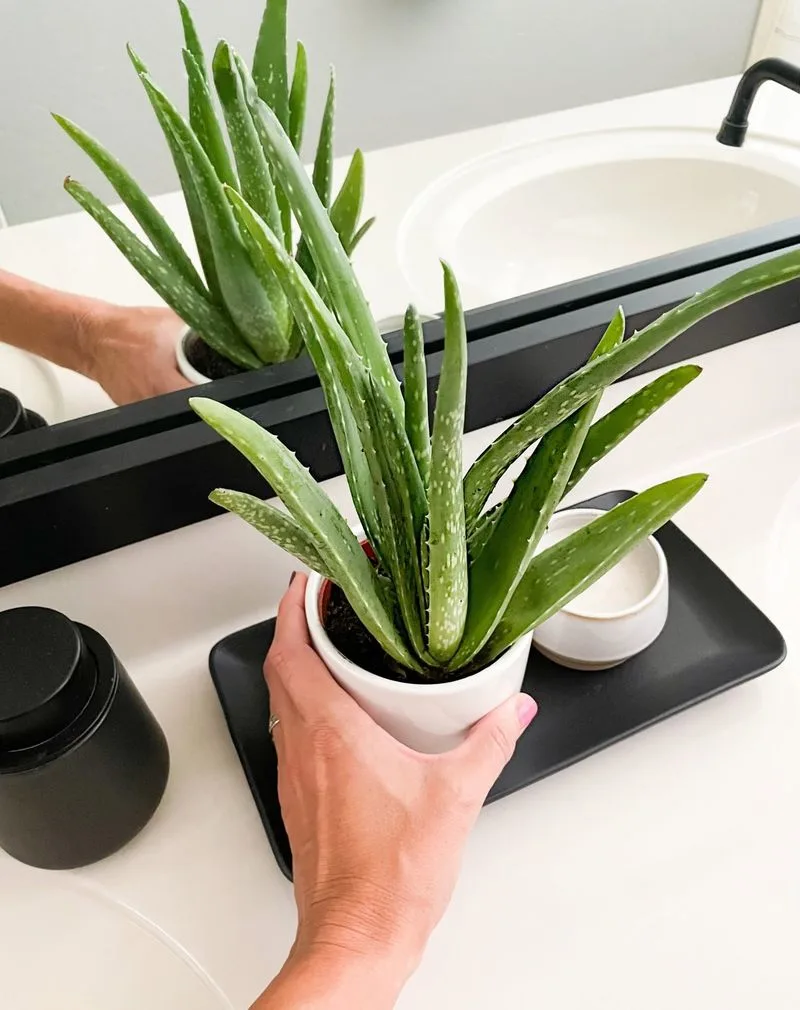
Aloe Vera is a champion of resilience, thriving even in the most neglectful of gardening routines. This succulent stores water in its thick, fleshy leaves, allowing it to survive long periods without irrigation. Perfect for the busy or forgetful gardener, Aloe Vera is not just low-maintenance but also offers soothing gel for minor burns and skin irritations. Keep it on a sunny windowsill and enjoy its dual purpose. Did you know? Aloe Vera has been used for medicinal purposes dating back to ancient Egypt, often referred to as the “plant of immortality.”
Snake Plant
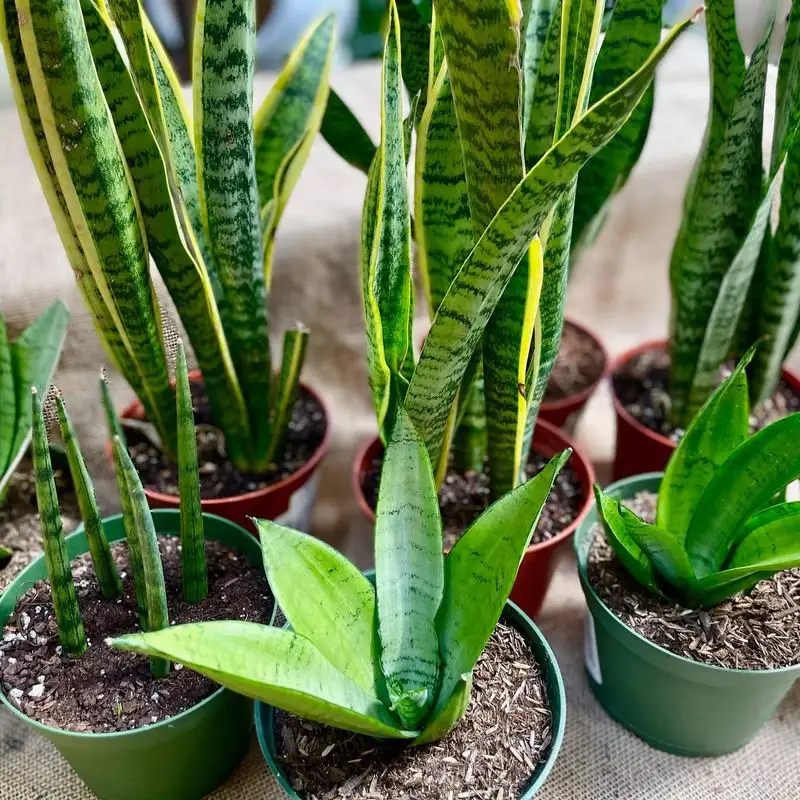
The Snake Plant, or Sansevieria, is like the stoic guardian of your indoor garden. With its upright, sword-like leaves, it doesn’t just add architectural interest but also purifies the air. Able to withstand low light and infrequent watering, it’s a favorite among city dwellers with hectic schedules. Its resilience is matched by its versatility—place it in any room and watch it thrive. Interestingly, the Snake Plant is known to convert CO2 into oxygen at night, making it an ideal bedroom companion for a restful sleep.
Jade Plant
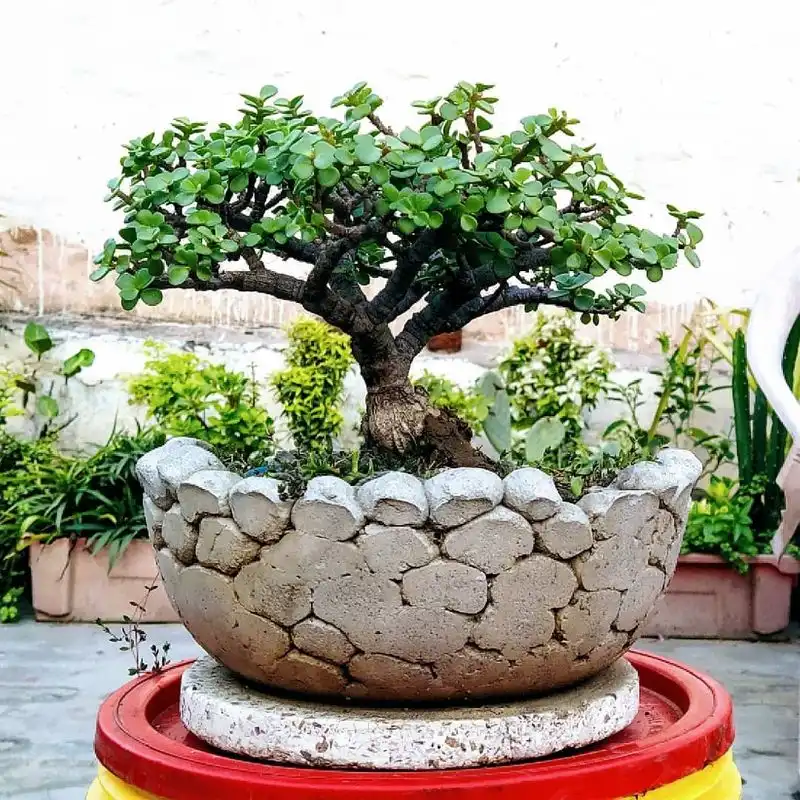
Embodying the spirit of prosperity and good fortune, the Jade Plant is a beloved staple in many homes. Its round, plump leaves store water, making it drought-resistant for those who may forget to water regularly. This undemanding beauty prefers bright light and can grow into a charming miniature tree over time. A symbol of wealth in Feng Shui, it’s often given as a gift for new beginnings or prosperity. Place it near a window where it can bask in the sun, and let it work its magic both decoratively and symbolically.
ZZ Plant
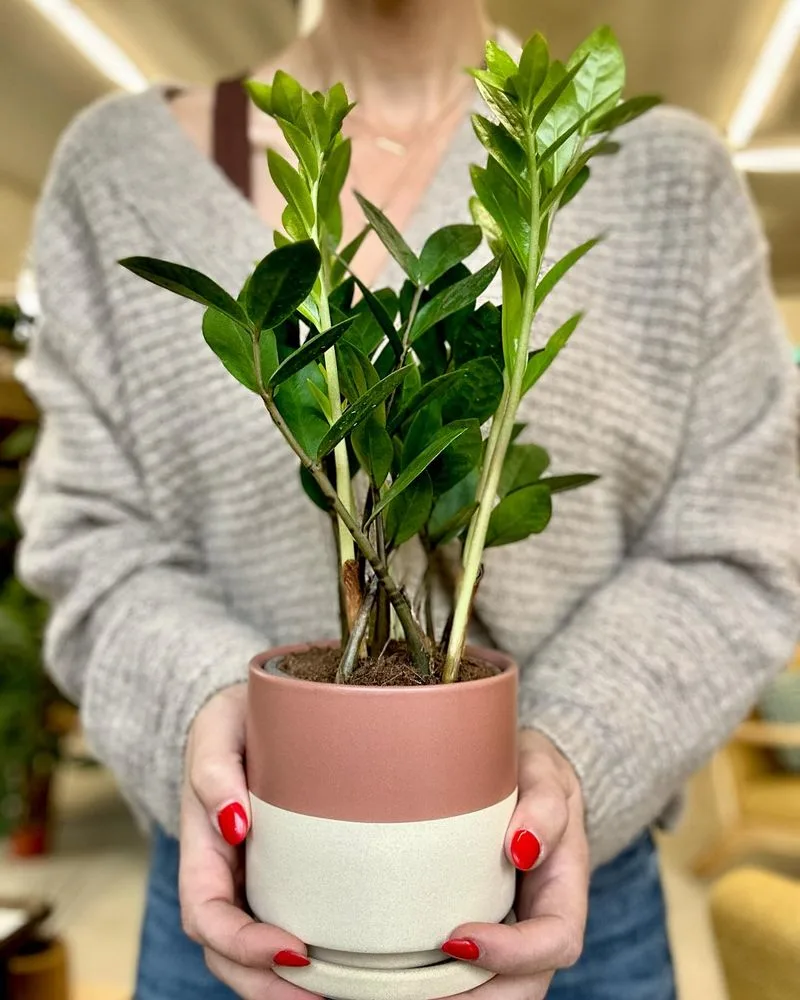
The ZZ Plant, or Zamioculcas zamiifolia, is as close to indestructible as a plant gets. Its glossy, dark green leaves are not just eye-catching but also incredibly tough, tolerating neglect like a seasoned pro. This plant is perfect for offices or low-light areas where other plants might struggle. Its ability to thrive with little water means less stress for you. Intriguingly, the ZZ Plant has a unique ability to tolerate drought and low light, making it a favorite among beginners. Place it anywhere from home offices to shaded corners.
Spider Plant
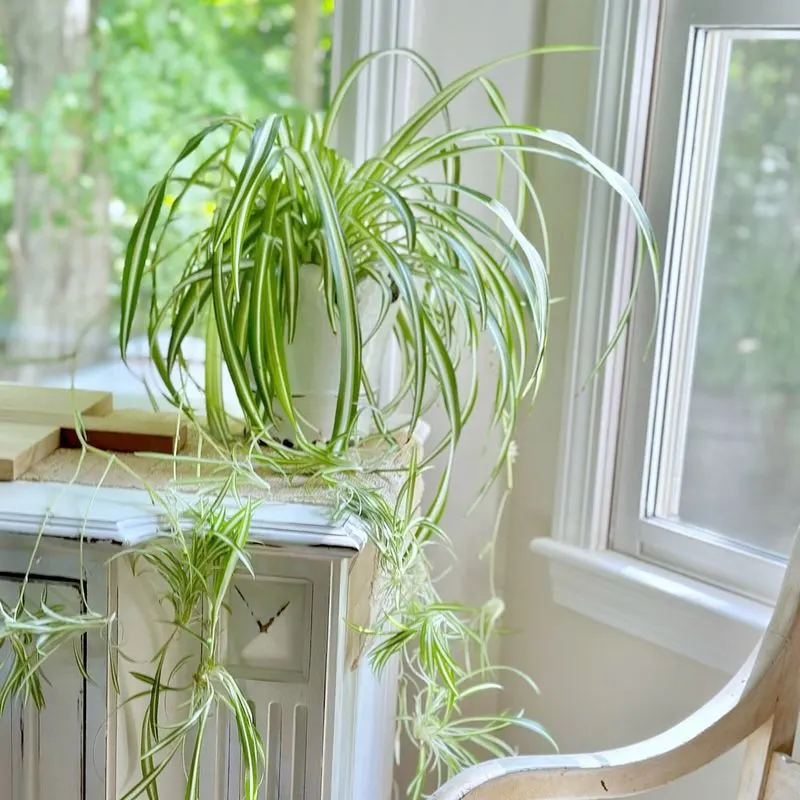
With its cascading green and white-striped leaves, the Spider Plant is a visual delight that offers a burst of freshness. Known for its air-purifying properties, this plant is low-maintenance yet rewarding, thriving with minimal watering and indirect light. It’s an excellent choice for hanging baskets, where its “spiderettes” can dangle freely. As a bonus, the Spider Plant is pet-friendly, making it a safe addition to homes with furry friends. Fun fact: This plant was popularized during the Victorian era and remains a household favorite today.
Pothos
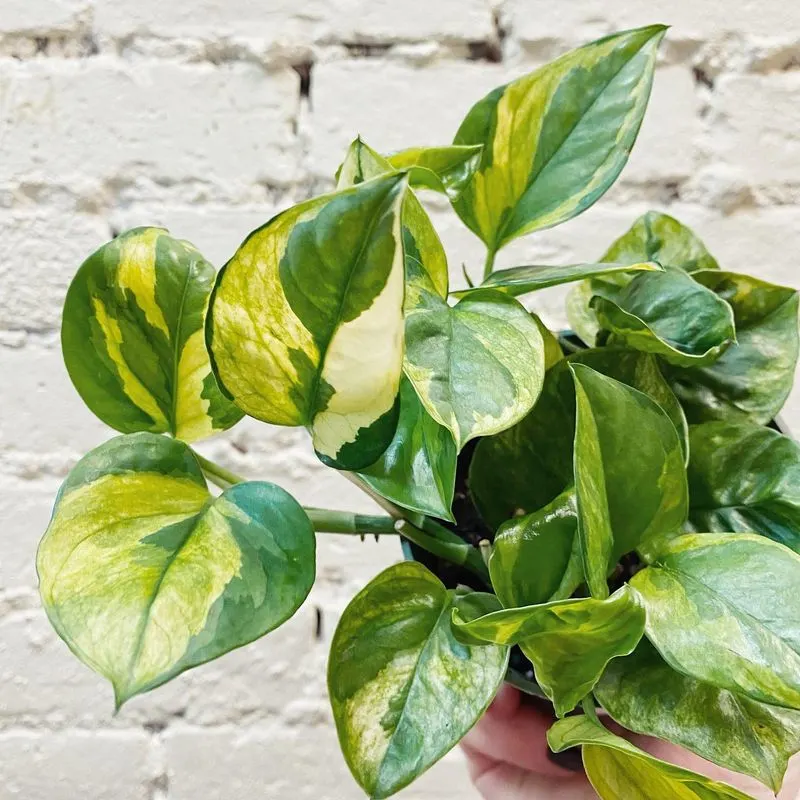
Pothos, with its heart-shaped leaves, is often the first choice for both novice and seasoned plant enthusiasts. This forgiving plant thrives in a variety of environments, from low light to bright, indirect sunlight. Renowned for its air-purifying capabilities, Pothos can grow long, trailing vines, adding a touch of nature’s elegance to any room. Its adaptability means it requires less frequent watering, making it ideal for those who travel often or simply forget. A striking feature is its variegated leaves, which bring an exotic look to your indoor space.
Rubber Plant

Stately and robust, the Rubber Plant is a favorite for adding a touch of drama to interiors. Its broad, glossy leaves are not only beautiful but also efficient at removing toxins from the air. This plant appreciates a well-lit spot away from direct sunlight and can endure occasional neglect when it comes to watering. If you’re looking to make a bold statement with greenery, the Rubber Plant is a perfect pick. Did you know? The Rubber Plant gets its name from the latex-like substance that can be extracted from its leaves.
Peace Lily

Graceful and serene, the Peace Lily is more than just a pretty face. Known for its lush, dark green foliage and delicate white flowers, it’s an excellent choice for those seeking a plant that signals when it needs water by drooping its leaves. Thriving in low light conditions, it purifies the air and adds an elegant touch to any room. Despite its beauty, it requires minimal care, making it perfect for busy individuals. Fun fact: In NASA’s Clean Air Study, the Peace Lily was noted for its ability to remove toxins from the air.
Cast Iron Plant
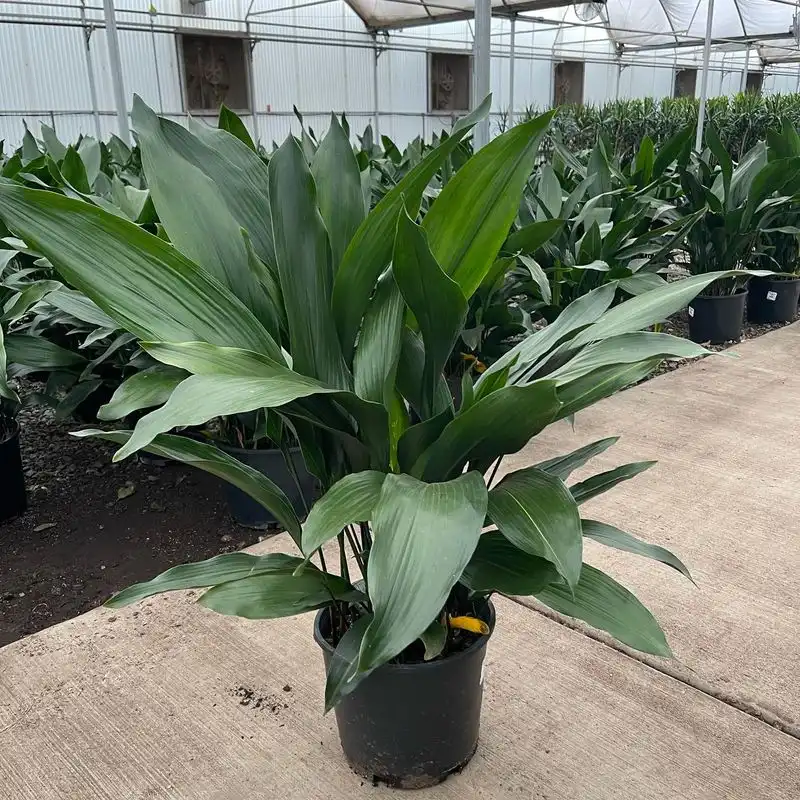
True to its name, the Cast Iron Plant is a hardy survivor, perfect for those who may not have a natural flair for gardening. With its ability to withstand neglect, inadequate light, and infrequent watering, this plant earns its reputation as nearly indestructible. Ideal for shaded areas or indoors with low light, it requires little more than occasional dusting of its broad leaves. Its resilience makes it an excellent choice for beginners or anyone seeking a low-effort addition to their plant collection.
Succulent Assortment
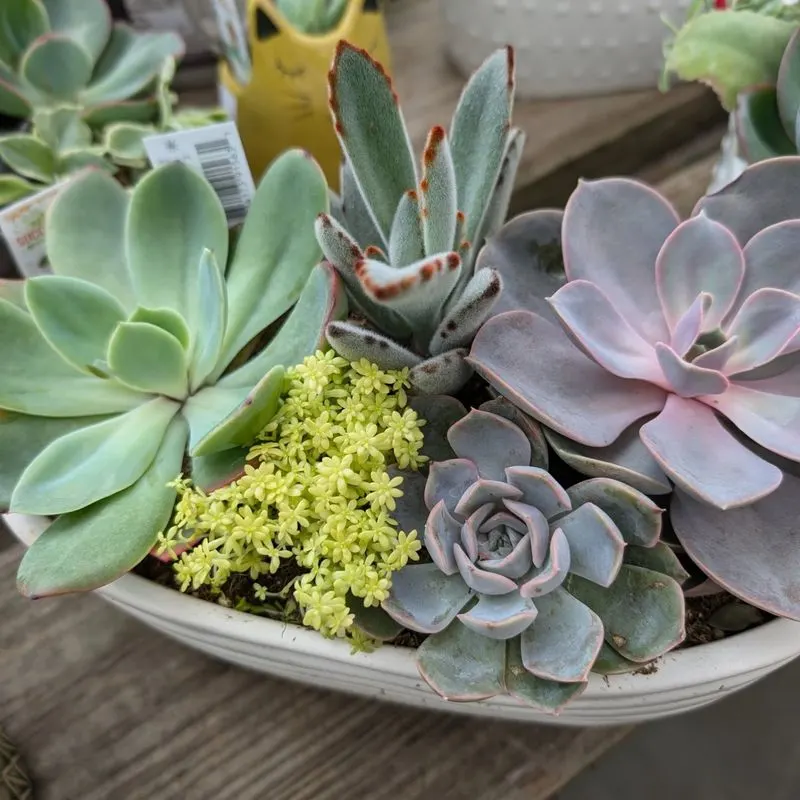
Succulents are the ultimate in low-maintenance greenery, offering a delightful array of shapes, colors, and textures. These drought-resistant plants store water in their leaves, making them perfect for those who occasionally forget to water. They thrive in well-drained soil and bright light, making them versatile for indoor or outdoor settings. Whether you opt for a succulent garden or a single statement piece, these plants add a modern, artistic flair to any decor. A quirky detail: Some succulents, like the Lithops, resemble tiny stones, a natural camouflage strategy.
Fiddle Leaf Fig
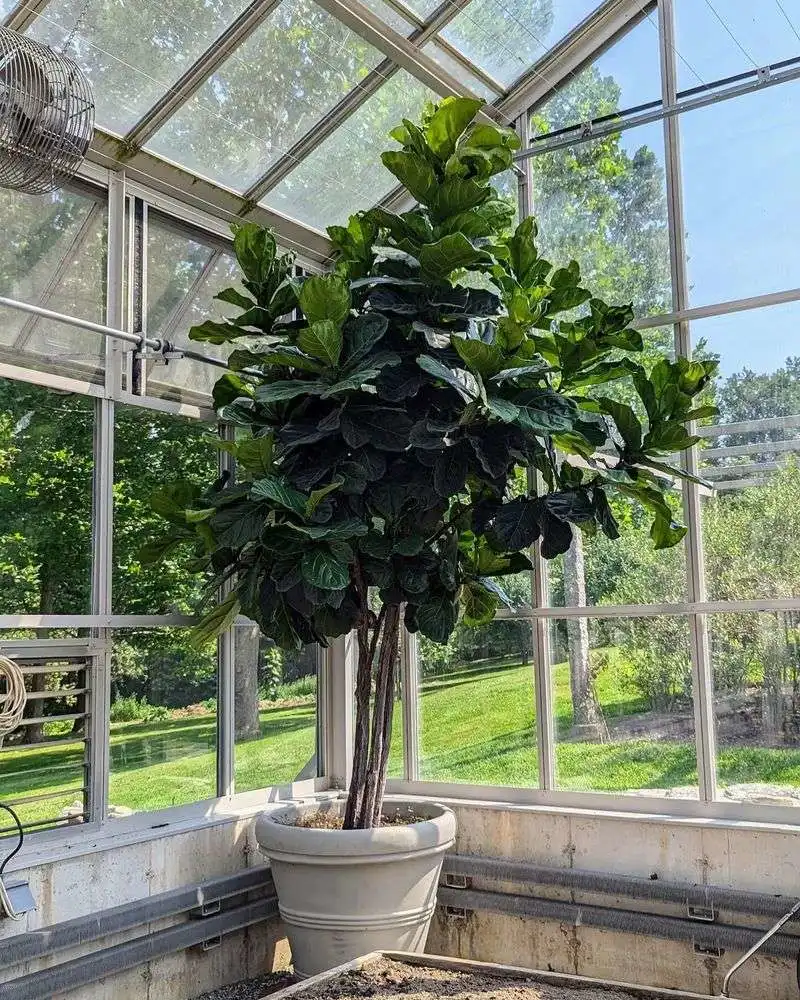
With its large, lyre-shaped leaves, the Fiddle Leaf Fig has become a symbol of contemporary interior design. This plant prefers bright, filtered light and requires more attention than some of its resilient counterparts. Regular watering is essential, though it’s crucial to let the top inch of soil dry out in between. Although a bit finicky, its dramatic foliage rewards those willing to meet its needs. Fun fact: The Fiddle Leaf Fig originates from the rainforests of West Africa. Its distinctive leaves make it a striking focal point in any room.
Boston Fern
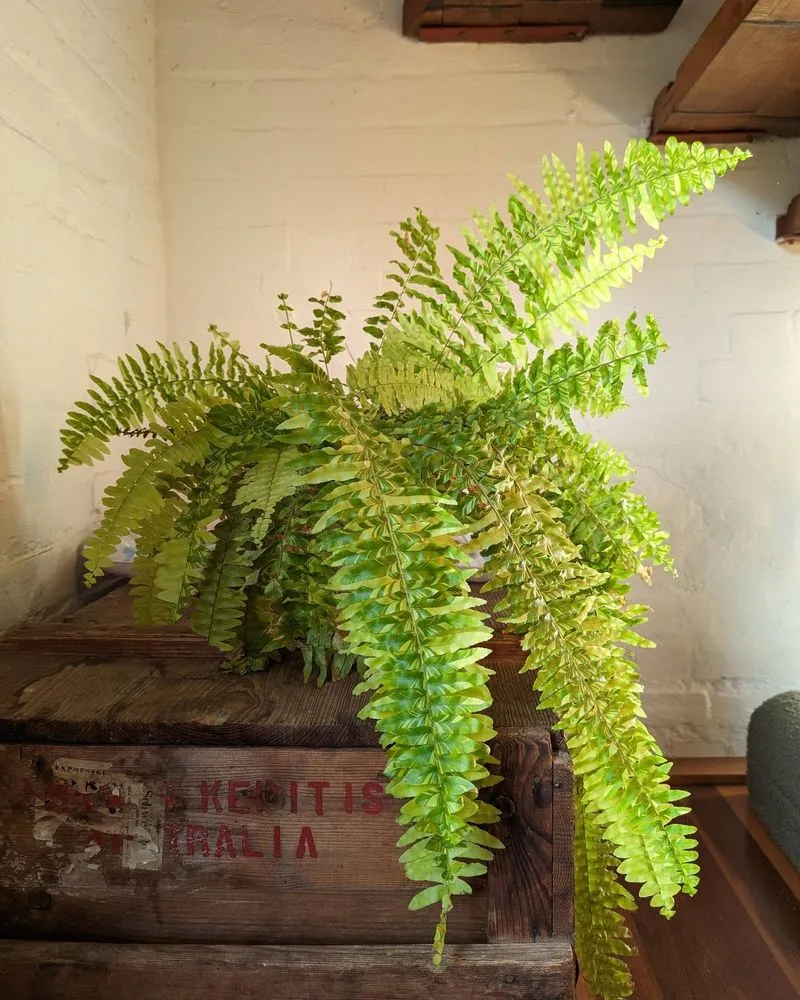
Boston Ferns bring a touch of classic beauty with their feathery, arching fronds. These plants thrive in high humidity and indirect light, making them perfect for bathrooms or kitchens. Consistent watering is crucial to keep them lush and healthy, as they prefer moist—but not soggy—soil. Their air-purifying abilities are an added bonus, contributing to a fresher indoor environment. Historically, Boston Ferns have adorned Victorian parlors, adding charm and grace to any setting. They’re a timeless choice for those who enjoy nurturing their greenery daily.
Calathea

Calatheas are renowned for their stunning, patterned foliage that seems almost too beautiful to be real. These plants require regular watering and high humidity to maintain their vibrant appearance, making them a favorite among plant enthusiasts who enjoy a bit of extra care. They thrive in indirect light and can brighten up any indoor space with their colorful leaves. A playful feature of Calatheas is their movement; they raise and lower their leaves in response to the light, a phenomenon known as nyctinasty.
Maidenhair Fern
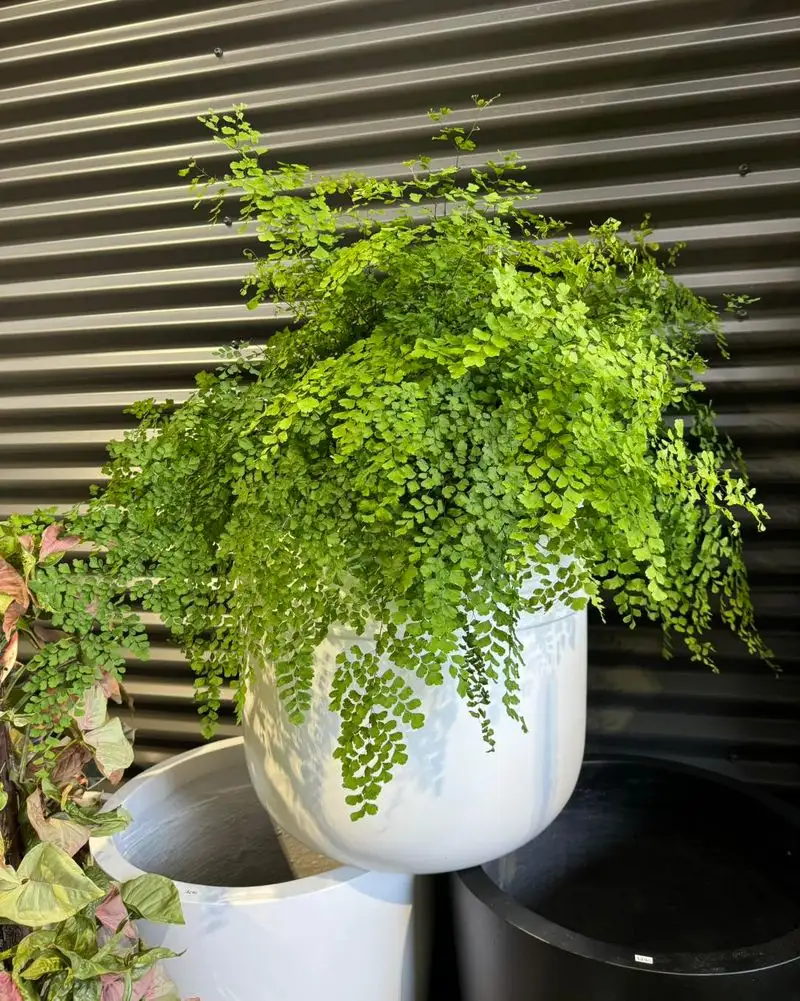
Delicate and elegant, the Maidenhair Fern is a plant that requires a consistent watering schedule to keep its fine, lace-like fronds looking their best. Unlike hardier species, this fern appreciates a bit more attention, thriving in humid environments with indirect light. It’s a popular choice for bathrooms, where the ambient moisture helps it flourish. Despite its delicate appearance, with proper care, the Maidenhair Fern can be a rewarding addition to your plant collection. It’s a timeless pick for those who enjoy a touch of elegance.
Basil
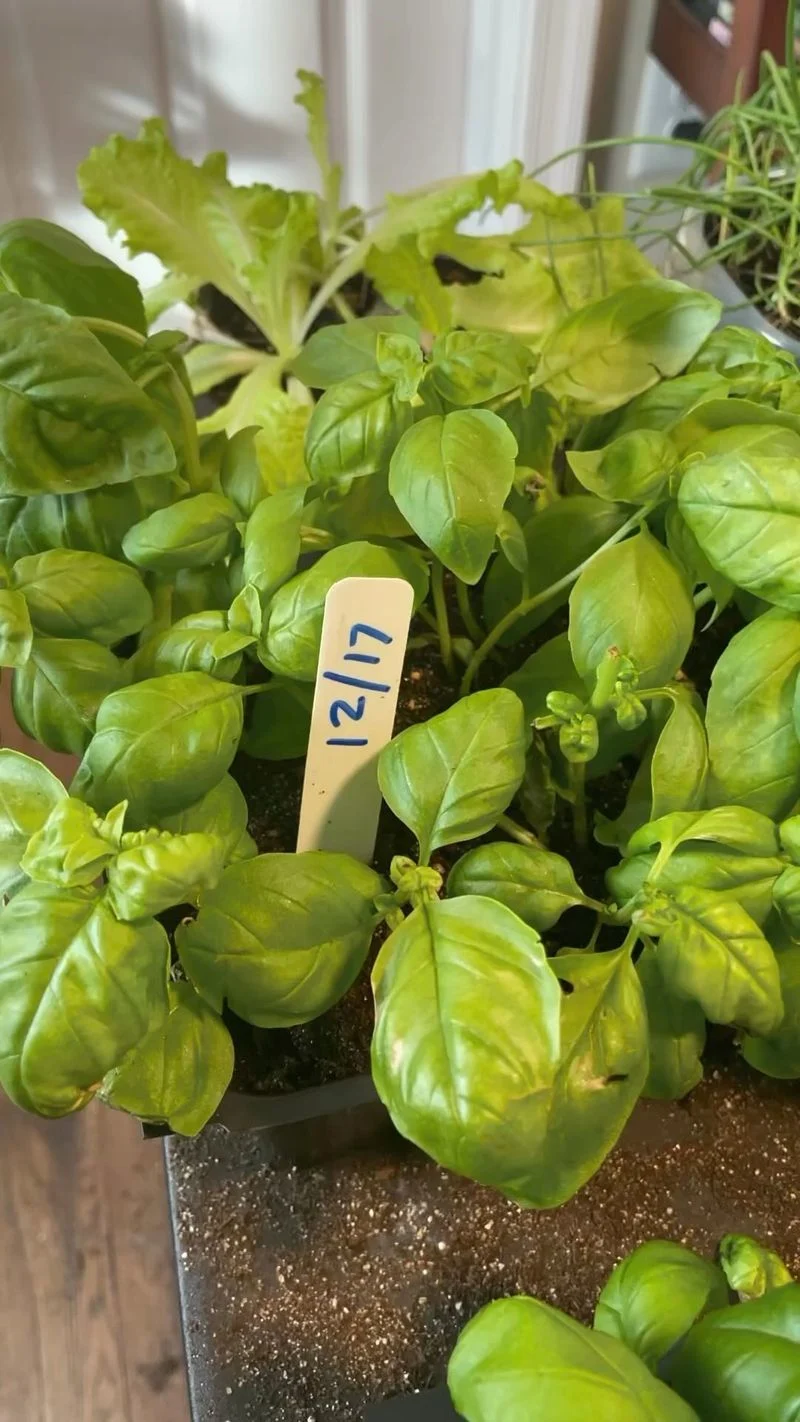
Basil, a favorite culinary herb, requires daily attention to thrive. This aromatic plant loves the sun and frequent watering to maintain its lush, green leaves. Perfect for kitchen windowsills, it provides immediate access to fresh herbs for cooking, enhancing your culinary adventures. Harvesting encourages new growth, making basil a continual source of flavor. Beyond its culinary uses, the bright green leaves add a touch of nature to your kitchen. A fun tidbit: Basil is a symbol of love in Italy, often associated with romance and passion.
Mint
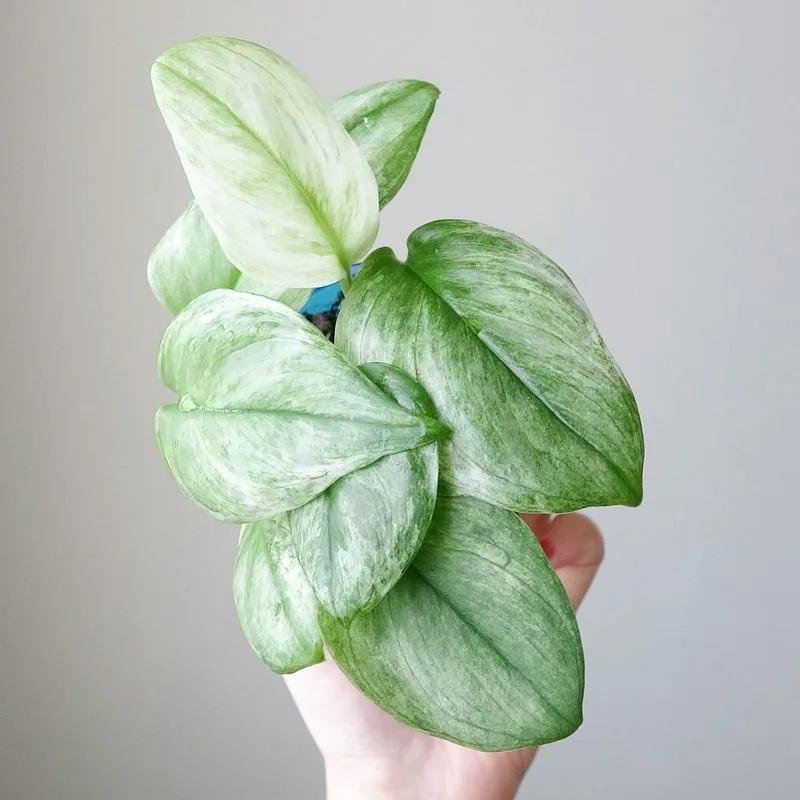
Known for its invigorating scent and culinary versatility, Mint is a plant that loves water. Frequent watering is essential to keep its leaves lush and aromatic. Perfect for pots to prevent it from overtaking your garden, Mint thrives in partial sunlight. Its rapid growth makes it a rewarding choice for those who love fresh herbs. Whether you use it for cooking or refreshing teas, Mint adds a delightful aroma to your space. Did you know? Ancient Greeks believed that mint could clear the voice and was used in various rituals.
Orchid

Orchids are the aristocrats of the plant world, known for their exquisite beauty. These delicate flowers require careful watering, as they prefer humid conditions but can suffer from overwatering. Place them in a spot with bright, indirect light and admire their stunning blooms. While they demand a bit more attention, the reward is their long-lasting flowers that can brighten up any room. Orchids have been a symbol of love and beauty for centuries, revered in various cultures for their grace and elegance.
African Violet
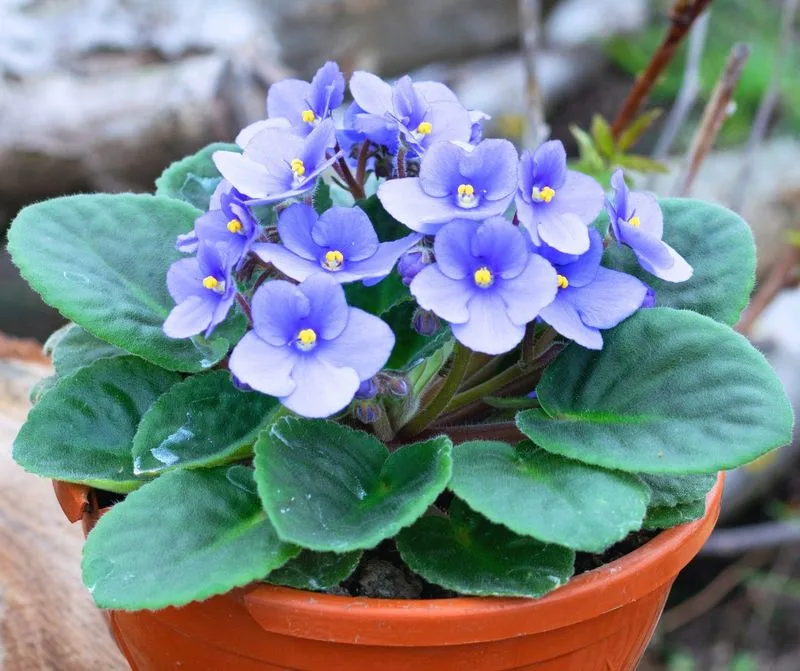
African Violets are cherished for their charming, velvety blooms and compact size. These plants thrive on regular watering and high humidity, making them a favorite for windowsills or kitchens. Their ability to bloom year-round with proper care adds continuous color to your space. Known for their sensitivity, they require careful handling to avoid damage to their delicate leaves. A quirky fact: African Violets belong to the family Gesneriaceae, sharing a lineage with other ornamental house plants.
Gardenia
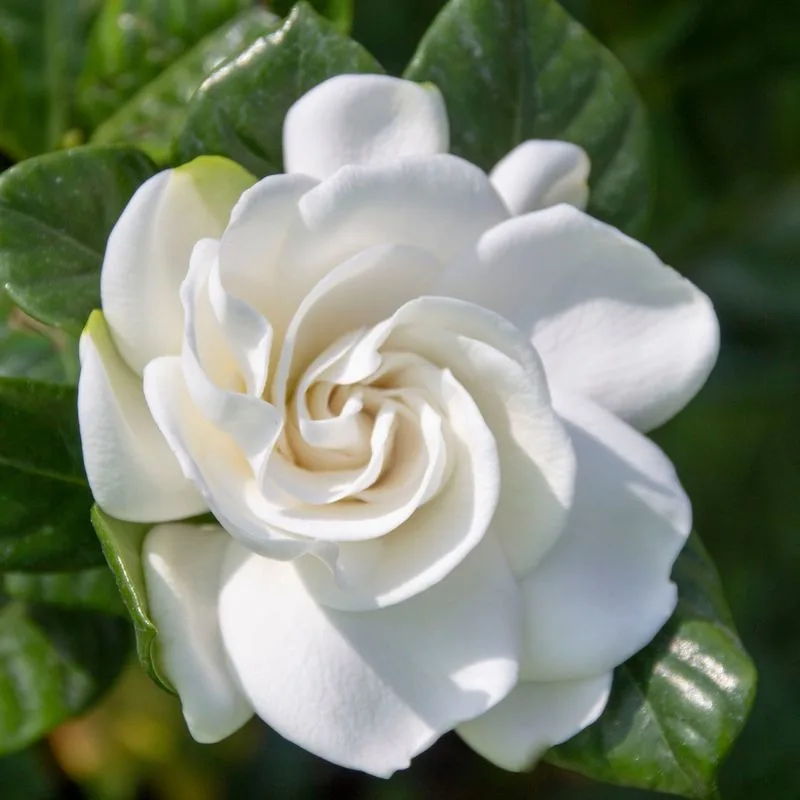
Gardenias captivate with their fragrant blooms and glossy foliage, making them a delightful addition to any garden or patio. They require consistent moisture to keep their roots hydrated and their flowers flourishing. Preferring full sunlight, Gardenias are perfect for those who enjoy daily plant care rituals. The sweet scent of their flowers has made them a popular choice for perfumes and essential oils. A historical tidbit: In Victorian times, Gardenias were often used to convey secret messages of love and admiration.
Begonia
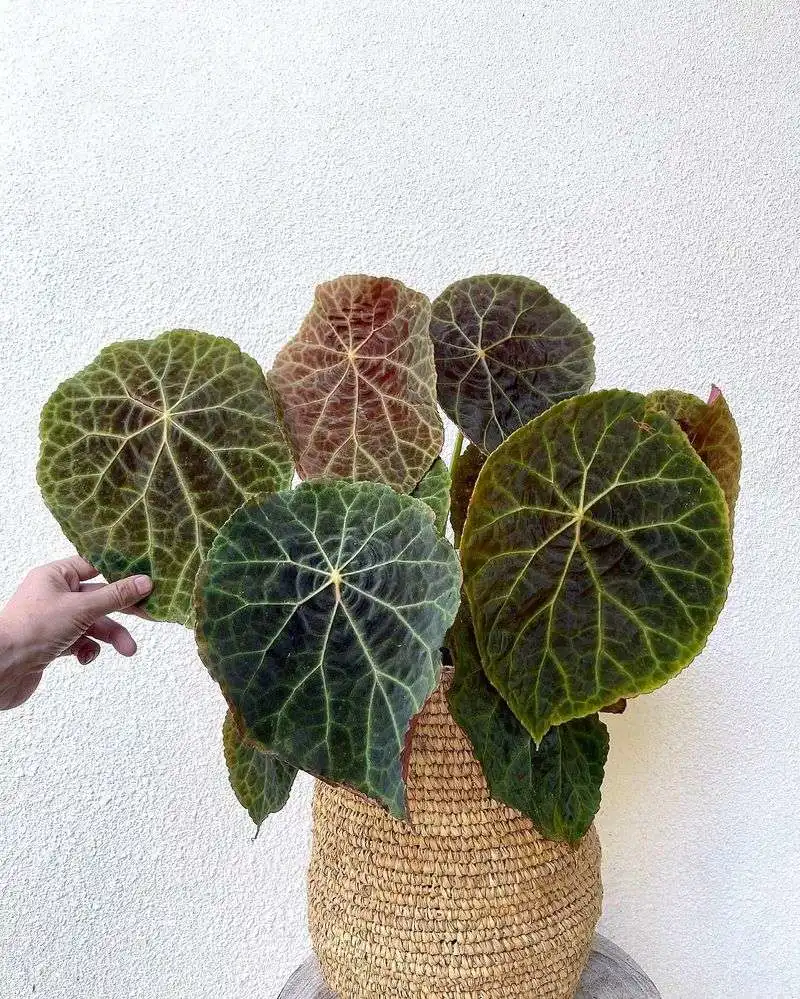
Begonias are a vibrant addition to any plant collection, with their striking flowers and foliage. These plants thrive with regular watering and appreciate a spot with bright, indirect light. Known for their diversity in color and form, Begonias can add a splash of brightness to patios or balconies. They’re a great choice for those who enjoy a bit of daily care. Interestingly, Begonias are named after Michel Bégon, a French governor and plant enthusiast who greatly influenced their popularity.

